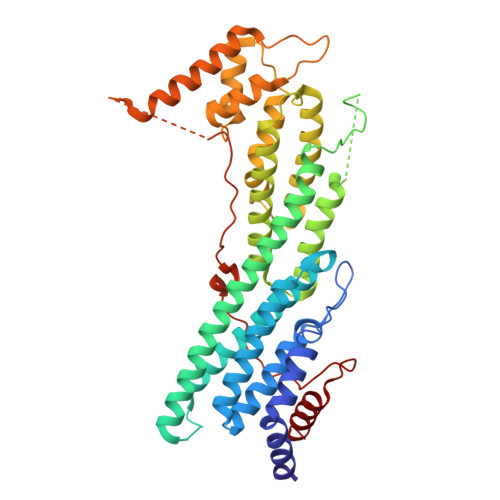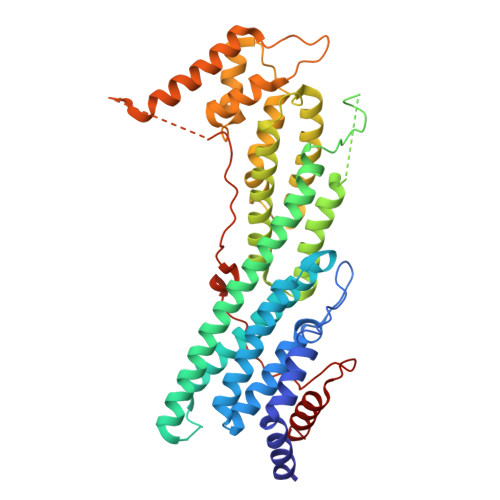Structural basis for myosin V discrimination between distinct cargoes
Pashkova, N., Jin, Y., Ramaswamy, S., Weisman, L.S.(2006) EMBO J 25: 693-700
- PubMed: 16437158
- DOI: https://doi.org/10.1038/sj.emboj.7600965
- Primary Citation of Related Structures:
2F6H - PubMed Abstract:
Myosin V molecular motors move cargoes on actin filaments. A myosin V may move multiple cargoes to distinct places at different times. The cargoes attach to the globular tail of myosin V via cargo-specific receptors. Here we report the crystal structure at 2.2 A of the myosin V globular tail. The overall tertiary structure has not been previously observed. There are several patches of highly conserved regions distributed on the surface of the tail. These are candidate attachment sites for cargo-specific receptors. Indeed, we identified a region of five conserved surface residues that are solely required for vacuole inheritance. Likewise, we identified a region of five conserved surface residues that are required for secretory vesicle movement, but not vacuole movement. These two regions are at opposite ends of the oblong-shaped cargo-binding domain, and moreover are offset by 180 degrees. The fact that the cargo-binding areas are distant from each other and simultaneously exposed on the surface of the globular tail suggests that major targets for the regulation of cargo attachment are organelle-specific myosin V receptors.
Organizational Affiliation:
Department of Biochemistry, University of Iowa, Iowa City, IA 52242, USA.


















